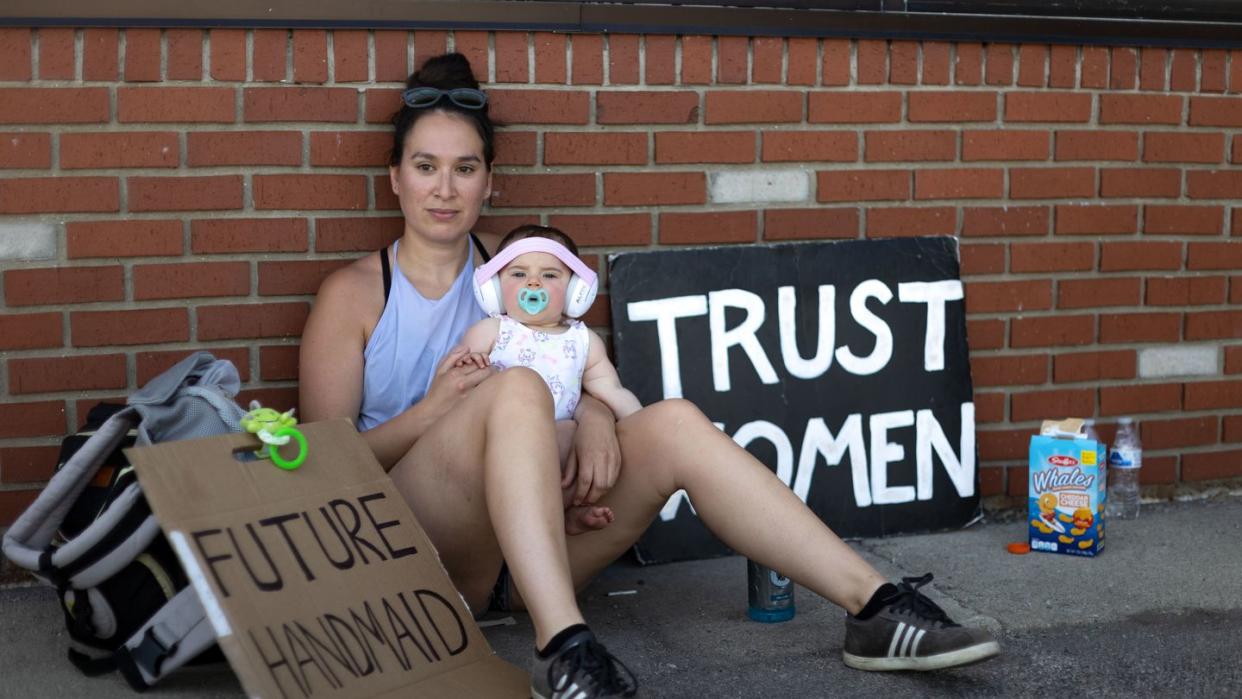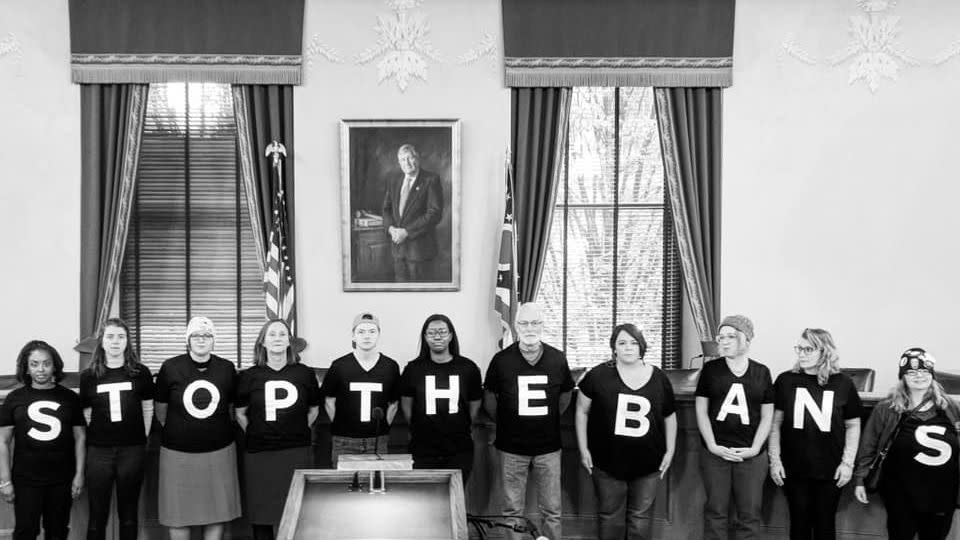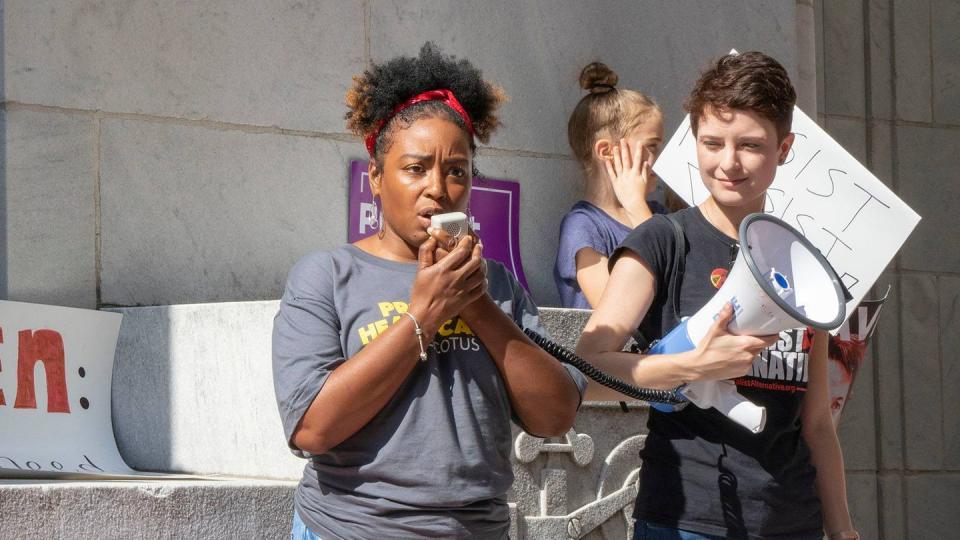In Ohio, a Grassroots Coalition Is Poised to Restore Reproductive Rights

For 82 days in 2022, Ohio banned all abortions over six weeks.
“It was a very dark and scary time in Ohio,” said Kellie Copeland, 54, of Akron, executive director of lobbying organization Pro-Choice Ohio. “There was so much work done by my staff and other organizations to get patients to care. … But that safety net didn’t catch everyone. There were some people who had to continue pregnancies against their will.”
Next week, Ohioans can vote to make sure that never happens again.
The U.S. Supreme Court overturned Roe v. Wade on June 24, 2022, leaving millions across the country to ponder the future of abortion access.
But for Ohioans, the landscape changed almost immediately, as just hours later, a federal court judge lifted a three-year injunction on the state’s six-week abortion ban. Suddenly, abortion care was out of reach for most people in Ohio.
Health care providers fielded desperate calls from patients. And reproductive rights groups sprang into action, increasing their efforts to provide financial assistance, out-of-state travel accommodations, and other support. In October 2022, an Ohio judge finally ended the ban again—indefinitely, but temporarily.
Over a year later, the fate of abortion access throughout the state now lies in the hands of the people—not the government. Next Tuesday, November 7, Ohioans will vote on Issue 1—an amendment to enshrine legal abortion and other reproductive rights in the state constitution. Ohio is the only state voting on abortion this year.
Behind the ballot measure is a diverse group of activists. They are abortion providers and organizers who have fought together for decades. They are doctors who are new to organizing but feel compelled to act. They are led, in part, by people of color—a demographic historically marginalized in the reproductive rights movement. Together, they have built a powerful coalition by capitalizing on the perfect combination of preparation and timing—all while withstanding major attacks from the opposition.

Known as Ohioans United for Reproductive Rights, the statewide coalition includes: the ACLU of Ohio, Abortion Fund of Ohio, Ohio Physicians for Reproductive Rights, New Voices for Reproductive Justice, Ohio Women’s Alliance, Planned Parenthood Advocates of Ohio, Preterm of Cleveland, Pro-Choice Ohio, and URGE (Unity for Reproductive & Gender Equity).
“So many people were looking to us for the answer,” said Rhiannon Carnes, 45, of Pickerington, executive director and co-founder of Ohio Women’s Alliance. “We knew we only had one opportunity to get this right.”
“Fighting two fights at once”
Ohio has had strong coalitions of reproductive rights, justice, and health advocates for decades. That community has only grown stronger since 2011, when Republicans took control of the Ohio General Assembly and governorship. Over the last 12 years, the state has passed restrictive abortion laws, including one prohibiting public hospitals from having transfer agreements with abortion clinics, which have dwindled from 23 in 2010 to nine now.
“So many of our organizations were organizing folks to testify or show up against these bills,” said Lauren Blauvelt, 35, of Columbus, vice president of government affairs and public advocacy at Planned Parenthood Advocates of Ohio. “In 2019, when the six-week ban was passed, the statehouse was filled. It was a huge coalition moment.”
By the time Roe v. Wade was overturned, the grassroots community was more organized than ever. Several local groups had disbanded their former coalition, Freedom of Choice Ohio, in 2020, and restructured themselves to better align their values, define their roles, and “address harms that had been created in the coalition space,” Blauvelt said.
Those harms included a failure to center Black and brown organizers and provide enough funding for their groups, according to multiple coalition members.

“We’re certainly still not where we should be, but I think that a lot of red states especially are dealing with the same thing,” said Jordyn Close, 26, of Columbus, deputy director of Ohio Women’s Alliance. “We’re constantly battling these attacks from the legislature, from [anti-abortion groups] … and also having to take on a lot of the labor to rebuild our internal structures. … And so, that work moves slower than it should, because we’re fighting two fights at once.”
The Black-led groups in the coalition are focused on reproductive justice, a framework extending beyond the legal right to an abortion, and accounting for economic, social, and health factors that impact reproductive choices. Reproductive justice considers disparities for women of color, who struggle to access care whether abortion is legal or not, experience higher infant and maternal mortality rates, and face higher rates of criminalization. It encourages the rights to have children, to not have children, and to parent in safe and healthy communities.
“We do this work because we have to,” said Beulah Osueke, 33, of Philadelphia, interim executive director of New Voices for Reproductive Justice, which is based in Pennsylvania and Ohio. “We don’t have the luxury of waiting it out.”
“All eyes are on Ohio.”
Following the reorganization, the groups worked together to advocate for Democrat candidates in the 2022 Ohio Supreme Court election. Although Republicans swept the open seats, Carnes said the collaboration helped prepare groups for a “unified fight” to develop Issue 1, following in the footsteps of Michigan, Vermont and California, which all passed their own amendments protecting abortion rights in 2022.
The Ohio groups partnered with the newly formed Ohio Physicians for Reproductive Rights to write the ballot language and decide on timing.
If they submitted in 2024, they could take advantage of momentum around the presidential election. But waiting a year also meant the Ohio Supreme Court might reinstate the six-week abortion ban. On top of that, pressure was mounting from the opposition. In late 2022, the Ohio GOP attempted to pass a proposal making it harder for voters to amend the state constitution. They would eventually succeed in getting the state to hold a special election in August 2023, though voters rejected their measure, which would have required 60 percent of voters to enact new constitutional amendments instead of a simple majority of 50 percent plus one.
The Ohio reproductive rights coalition forged ahead with its campaign in 2023. The group encountered an energized base—polling data shows 58 percent of Ohio voters support the abortion amendment—and filed more than 700,000 signatures to get the measure on the ballot.
“There’s a lot of people who think that you can PTA-meeting and bake-sale your way through it,” said Gabriel Mann, the coalition’s communication director. “It takes thousands of people to collect that many signatures.”
The coalition declined to disclose the full cost of the campaign, but said it saw tremendous support from its grassroots donor base.
Currently, the coalition is educating voters on the amendment, and dismissing claims by anti-abortion groups that the measure could allow children to get abortions or transgender medical treatment without parental consent.
Close attributes the coalition’s success with voters to relationship-building.
“We’re not just talking to voters for weeks before an election,” Close said. “We’re having community conversations year-round, doing things like planning back-to-school drives, coat drives.”
Passing the amendment would bring relief to doctors and citizens alike, Lauren Blauvelt said.
“It will make a huge difference for providers to feel confident that they can stay here, for college students to stay here, for people to want to live and work in Ohio.”
There may also be national implications, as other states, including New York and Maryland, plan abortion-related amendments for 2024. And politicians are watching to see if Ohio’s support for abortion will signal a political shift for the state ahead of next year’s U.S. Senate and presidential races.
“All eyes are on Ohio,” said Anastasia Martinez, 28, of Columbus, senior campaign manager for Ohio Women’s Alliance. “There’s a lot riding on this campaign for Ohioans, but also the national fabric of abortion access.”
You Might Also Like

